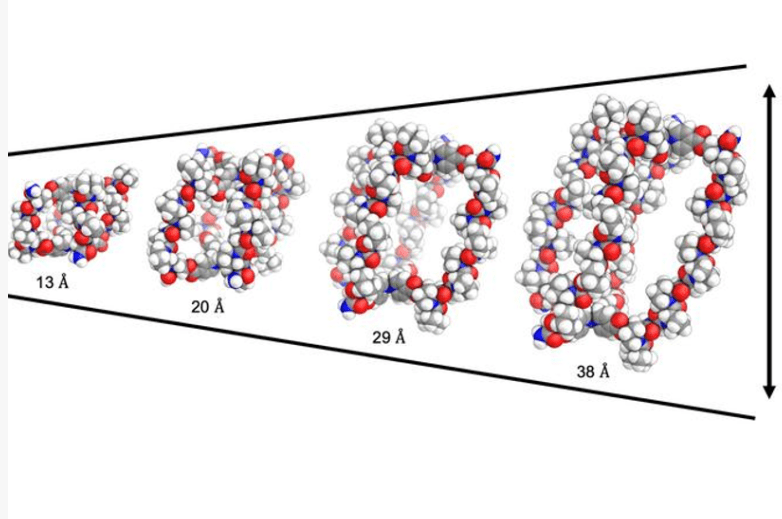As proline and collagen are widely available and don’t rely on chains of hydrocarbons like previous methods, the team hope to sustainably scale up their current production in the lab.
Increasingly complex architectures
Advances in self-assembly have enabled the construction of increasingly complex architectures from simple building blocks. The self-assembly of metal-organic cages enables the rapid creation of atomically defined, three-dimensional, nanoscale forms that are like proteins, but existing metal-organic cages are almost always built from rigid and flat panels.
Recent work has focused on the construction of simple metal-organic polyhedra – that have a 3-D shape with flat polygonal faces, sharp corners, and straight edges – thanks to their reliable and predictable assembly from rigid, flat, systems.
The cage can be created in a variety of sizes, making possible different drug payloads. This flexible structure allows for chemotherapy drugs, antibiotics, and antivirals to be delivered to the malignancy site. Until now, cages of this kind could be made only by using hydrocarbon molecules found in tar that is often toxic to people.
The team members said their development will make it possible, for the first time, for faulty enzymes to be replaced within the body. The activities of enzymes, which are made up of proteins and carry out vital bodily functions, could have been blocked only by drugs. But the new discovery could have an impact in the body by reducing inflammation; the cages could replace this function which may lay the groundwork for a new form of treatment.
“We’ve created is essentially a biologically compatible molecular teabag,” McTernan explained. “We can fill this teabag – the cage made from widely available proline and collagen –with several different medicines and deliver them in a much more targeted way than we could before. In time, we hope that this could limit hair loss, nausea, and other unpleasant side effects of chemotherapy. We might even be able to repair malfunctioning enzymes that have an influence on the development of cancer.”



